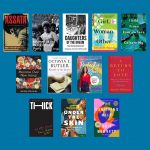Wanna lose weight or get healthy in the cheapest, most easily accessible way possible?
Many sources will tell you to walk. Roads are free, after all. (Minus a small taxpayer contribution.)
But what if can’t walk in your neighborhood because the streets aren’t safe from harassment, or worse forms of violence? What if they’re deteriorated or don’t have maintained sidewalks?
Then your best, low-cost avenue to a more active lifestyle just disappeared faster than you can say “speedwalk.”
I hadn’t thought much about this concrete correlation between neighborhood safety and women’s (or indeed, anyone’s) health until a recent conference call for Leadership Awards volunteers on women’s health in our region, where the speakers explained that a woman’s health (her ability to keep in shape and her weight down) can be greatly impacted by the safety of her streets.
The good news is that some of the greatest health risks for women in our area–diabetes, obesity and heart disease–are all diminished by a more active lifestyle.
The bad news? That many of the women most at risk for these conditions are low-income women without access to safe streets on which to walk–the most economical form of exercise out there. They’re also the least likely to be able to afford access to gyms or other types of sports or exercise that will enable them to maintain healthy hearts, weight and other benefits of being active.
This is what came to mind when I read an interesting post on Half Changed World, on Google’s latest attempt to tell us about our lives by measuring how walkable a neighborhood is.
According to WalkScore, the site “shows you a map of what’s nearby and calculates a Walk Score for any property. Buying a house in a walkable neighborhood is good for your health and good for the environment.”
This all seems to be measured by how close your home is to grocery stores, shopping, parks, etc.
I can’t help but do a little experiment.
I calculate the WalkScore for the office of The Women’s Foundation, downtown in northwest D.C. We get a 98 out of 100.
This is good news, since I walk to work everyday. Except today, when it’s a million degrees outside, but that’s besides the point. I don’t think Google accounts for weather. (Yet.)
Next, I try an address of one of our Grantee Partners, Ascensions, serving families southeast Washington, D.C., in Ward 7 and 8, a target area for Stepping Stones.
Their walk score? 46. A pretty vast difference, even when you consider that Google isn’t measuring for safe streets, the condition of sidewalks or traffic flow, and that they’re just considering access to stuff.
I consider that not only are families in this area most likely not able to incorporate walking into their daily errands and lifestyle (the easiest way), but also how much harder it could be to access the services provided by Ascensions than it would be for me to find a similar service for myself in my neighborhood in northwest D.C.
Meaning that walkability could be impacting not only physical health, but mental health as well. Or financial health. Or any number of other aspects of one’s life that are improved through the involvement of practitioners and specialists to advise, examine and assist.
I can’t help but think that this situation would probably be repeated over and over if I tried WalkScores on our various Grantee Partners serving low-income areas, women and their families.
And how much lower they would be if Google incorporated factors like safety and sidewalks into their calculations. (Well, it wouldn’t be the first time I was disappointed by Google Map’s accounting for economics.)
It definitely gives me perspective about my daily walks to work in the morning–which I will now stop taking for granted, even when crazy D.C. drivers almost kill me–and a new way of viewing our region and its development in terms of the perspective of the women who are–or aren’t–able to safely take a stroll on its streets.
And the potential for changes made in an effort to improve the walkability and safety of our region and its streets–in all neighborhoods–to improve the lives and health, not only of women and their children, but all of us.
After all, we should all be able to take Bono’s advice and, “Walk on.”


